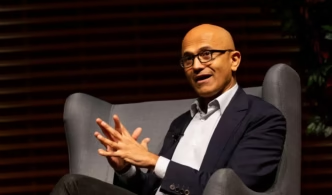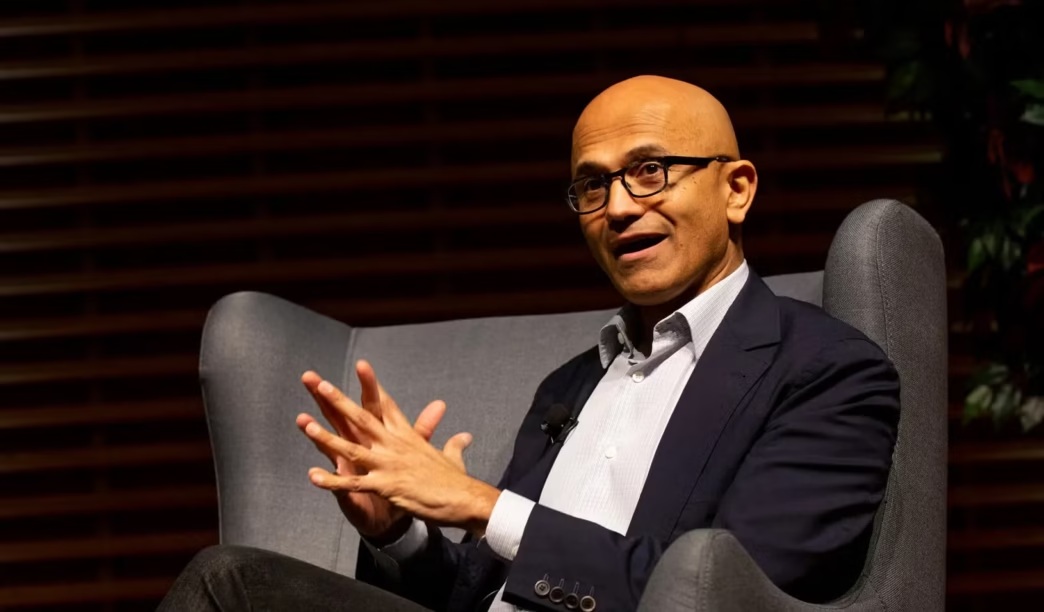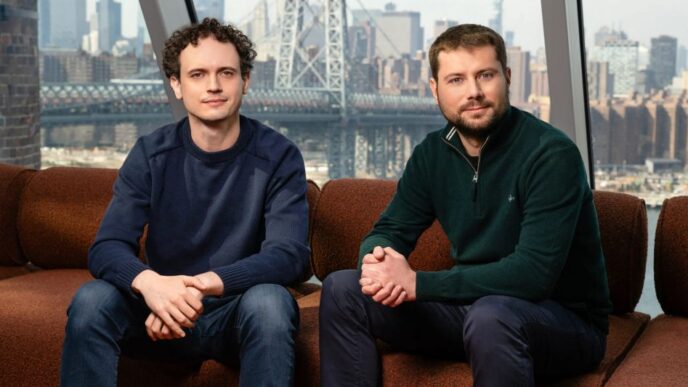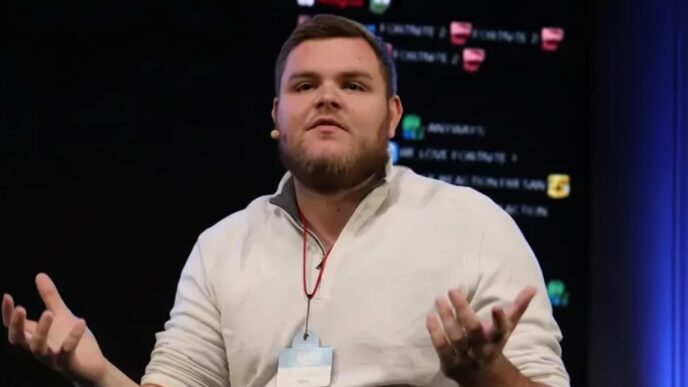Microsoft CEO Satya Nadella is reminding the world that his company already leads the AI infrastructure race. While OpenAI rushes to build data centers, Microsoft already operates them at a massive global scale.
On Thursday, Nadella shared a short video that introduced Microsoft’s first large AI system. The setup is built to run OpenAI’s advanced workloads and is powered by Nvidia technology. Nadella called it the “first of many,” signaling that more of these AI systems will soon join Microsoft’s global Azure network.
For years, Microsoft has been investing quietly in expanding its data center footprint. Those investments are now becoming its biggest advantage. Nadella’s message was clear: Microsoft has the capacity, the reach, and the systems that define the next wave of artificial intelligence.
Each new AI system is huge. It combines over 4,600 Nvidia GB300 rack computers, each using the powerful Blackwell Ultra GPU chip. These machines are linked by Nvidia’s InfiniBand networking technology, which moves data at incredible speed. This combination allows the system to act as one powerful brain, able to process and train the largest AI models ever built.
Nvidia CEO Jensen Huang describes such systems as “AI factories” because they produce the compute power that drives machine learning. Nadella’s showcase proves how close the two companies have become. Nvidia provides the hardware, while Microsoft builds the global platform that makes it work everywhere.
Microsoft plans to deploy hundreds of thousands of Blackwell Ultra GPUs in its data centers worldwide. This expansion gives Azure one of the largest AI infrastructures on Earth. These systems can already handle models with hundreds of trillions of parameters, which will define the next generation of AI research and deployment.
The timing of Nadella’s announcement was not accidental. It came soon after OpenAI, Microsoft’s close partner and competitor, signed billion-dollar data center deals with Nvidia and AMD. Those deals, estimated at more than $1 trillion in commitments, have drawn global attention. OpenAI CEO Sam Altman has said even more projects are coming.
But Nadella’s tone was calm and confident. He reminded the industry that Microsoft already has what others are still building. With over 300 data centers in 34 countries, the company says it is “uniquely positioned to meet the demands of frontier AI today.”
These facilities already handle billions of transactions daily. They host enterprise applications, consumer services, and AI workloads at the same time. Now, Microsoft is upgrading them to handle even larger AI models, creating a foundation that few others can match.
The company’s long-term strategy is becoming clear. Under the leadership of the Microsoft CEO, the company is evolving from a software maker into a global AI infrastructure provider. Years of planning and coordination among Microsoft’s cloud, research, and engineering teams have led to this moment.
Each decision, from chip choice to cooling systems, supports one vision: creating a modular AI ecosystem that anyone can use to train or deploy massive models. Azure customers and partners benefit from this design because it offers scale, speed, and reliability without added complexity.
Microsoft’s approach blends the stability that enterprises expect with the innovation that AI demands. Nadella’s leadership highlights this shift. His announcements are not just product updates; they are reminders that Microsoft powers much of the AI revolution already unfolding.
While many AI companies are building from scratch, Microsoft operates a live, global system. Startups like OpenAI, Anthropic, and xAI are still developing their own facilities, but Microsoft is already delivering. Its AI supercomputer network is active, connected, and optimized for immediate use.
The collaboration between Microsoft and Nvidia is also growing deeper. The two companies align on hardware design, software performance, and AI acceleration. This partnership ensures that as Nvidia creates faster chips, Microsoft’s Azure platform is ready to use them at scale.
Microsoft’s AI backbone also supports its own tools, including Copilot, Azure AI Studio, and Office 365’s intelligent features. Millions of daily users rely on these systems, which all run on the same Azure infrastructure Nadella presented.
The presentation by the Microsoft CEO was more than a technical showcase. It was a statement about readiness and leadership. Nadella showed that Microsoft is not chasing the AI future, it is already building it. His calm confidence reflects how deeply the company has integrated AI into every layer of its business.
As the AI race accelerates, scale matters as much as innovation. The ability to train and deploy models globally separates the leaders from the followers. On this front, Microsoft’s early investments are paying off. Nadella’s unveiling of these powerful AI systems shows that the company’s years of work are shaping the future of computing.
Over the next few months, Microsoft will continue expanding its AI capacity worldwide. These new systems will reach more regions and serve more customers. The company expects them to power the next generation of AI models, from multimodal tools to autonomous digital agents.
For Nadella, this is not just about hardware. It is about long-term strategy. By owning the infrastructure that powers modern AI, Microsoft positions itself as the engine of the world’s intelligent applications. Nadella is ensuring that Microsoft remains at the center of this transformation, guiding how AI evolves and scales.













